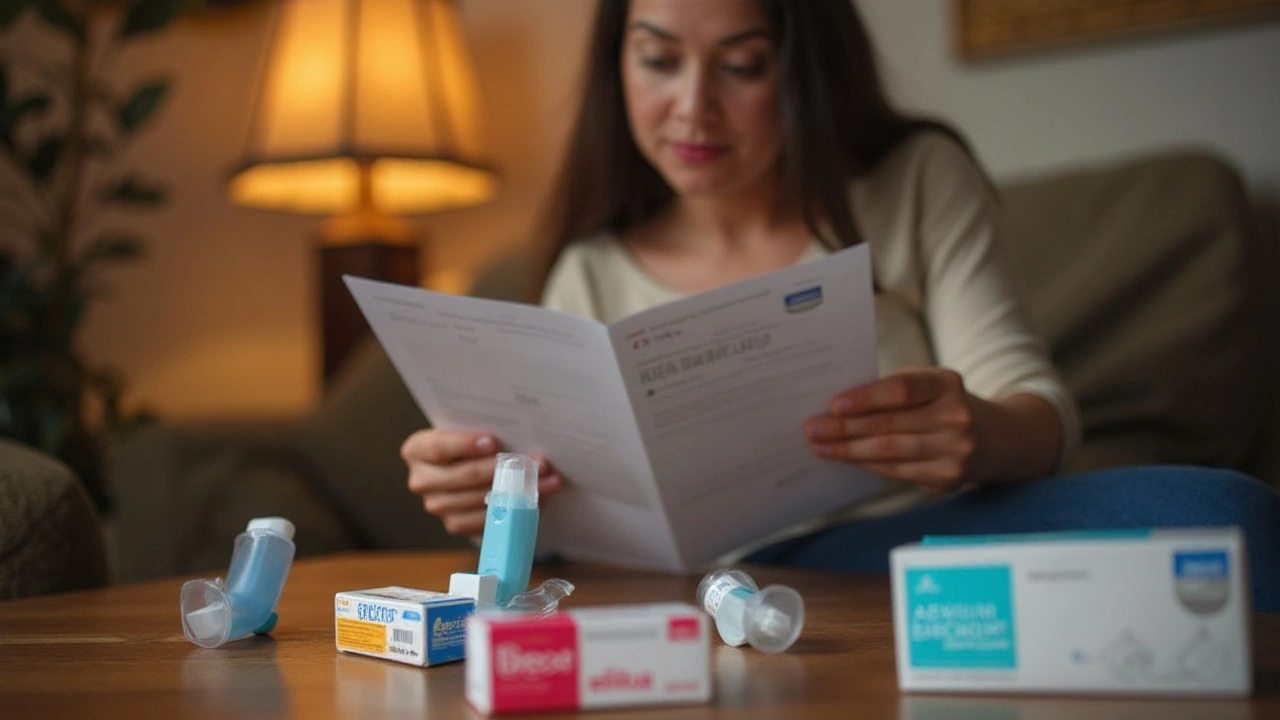Inhaler comparison: Rescue vs maintenance and HFA vs DPI
Picking an inhaler can feel confusing. This comparison cuts straight to what matters: how the inhaler works, when to use it, and what to check before you buy. I’ll keep it practical so you can decide or talk to your clinician with confidence.
How inhalers differ — quick breakdown
Rescue inhalers (like albuterol) stop sudden wheeze or breathlessness. They act fast and you use them when symptoms start. Maintenance inhalers contain steroids or long-acting bronchodilators. You use those daily to prevent symptoms, not to stop an attack.
Delivery type matters. Metered-dose inhalers (MDIs or HFA) spray medicine and often need coordination of breath and push. Dry powder inhalers (DPIs) release medicine when you breathe in hard. DPIs can be easier if you struggle with timing, but you must be able to inhale strongly.
Generics are common. Generic albuterol works the same as brand-name rescue inhalers for most people, and they usually cost less. Combination inhalers (steroid + long-acting bronchodilator) can reduce the number of devices you use, but they’re prescription-only and used for regular control.
Practical tips to choose and use an inhaler
Think about when you need relief. If you want fast rescue, choose a short-acting bronchodilator (albuterol). If you need daily control, ask about inhaled corticosteroids or combination options. If you travel a lot or need a spare, note the inhaler size and whether it has a dose counter.
Check coordination needs. If you have trouble timing a deep breath with the spray, a spacer for an MDI helps a lot. Spacers cut down on throat irritation and improve delivery to the lungs. If you can’t use a spacer, consider a DPI instead.
Look for a dose counter and expiry date. A dose counter tells you how many puffs remain so you won’t run out unexpectedly. Avoid inhalers past their expiration; the medicine may be weaker.
Side effects are usually mild. Rescue inhalers can cause a fast heartbeat or shakiness for a short time. Steroid inhalers can sometimes cause throat irritation or oral yeast, which is easy to prevent by rinsing your mouth after use.
Price and access matter. Generics and discount programs often cut costs. Some brands are pricier but offer specific delivery features or better tolerability. If cost is an issue, ask your pharmacist about cheaper equivalents or savings cards.
Final quick checklist: know whether you need rescue or maintenance treatment, pick the delivery type that matches your breathing ability, get a spacer if you use an MDI and need help, check dose counters and expiry, and talk to your provider about cost and alternatives.
Want a side-by-side comparison for specific brands or a printable checklist for your doctor visit? I can make one based on the inhalers you’re considering.

10 Effective Alternatives to Symbicort for Asthma and COPD Management
Discover the top 10 alternatives to Symbicort for managing asthma and COPD. This article provides detailed information on various inhalers and medications, such as Advair Diskus, Breo Ellipta, and Dulera, highlighting their effectiveness, pros, and cons. Understand the different options available to help you make informed decisions about your treatment plan.
